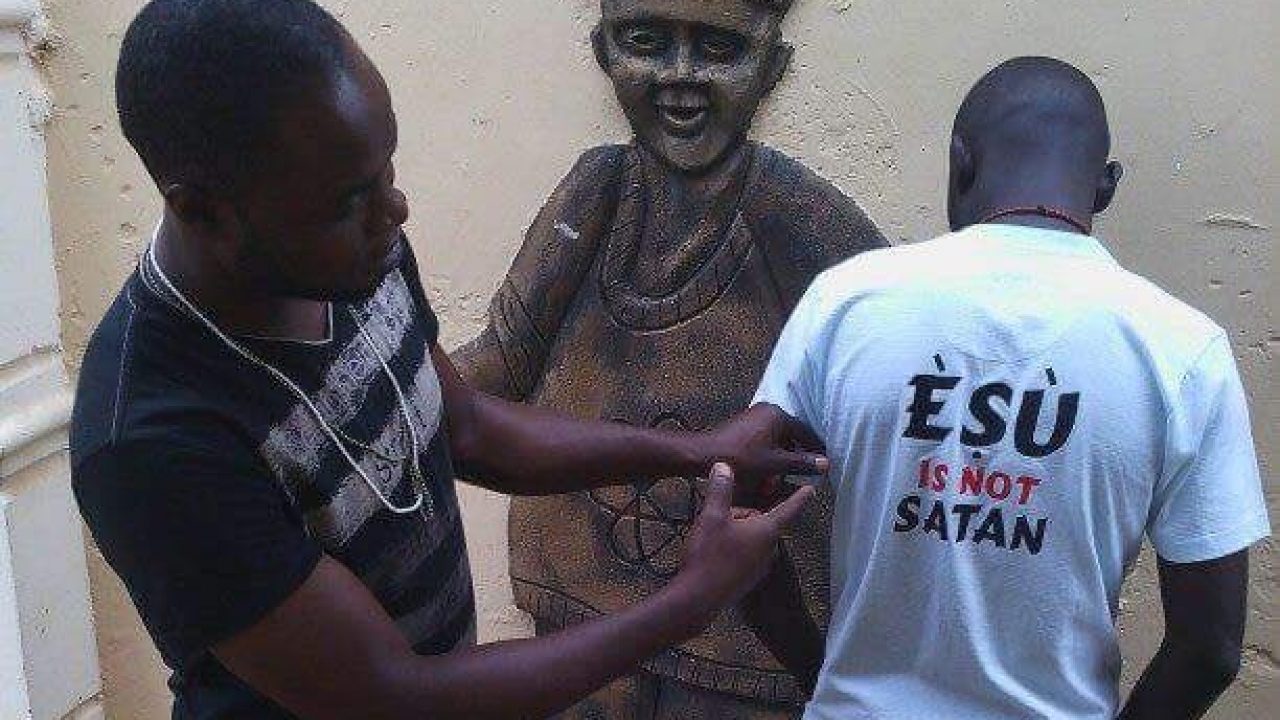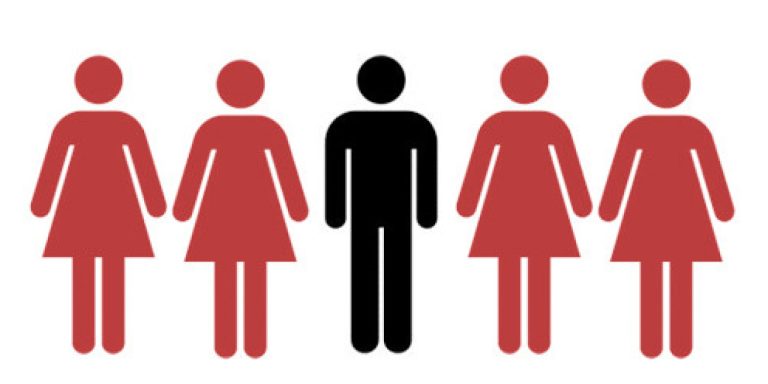“Esu is not Satan: A Study within Islam, Christianity, Satanism, and Yoruba Paganism By Ashraff Adeyemo
Perhaps there is no better time than now to discuss Satan. Recently, Nigerian pagans have intensified their…
Perhaps there is no better time than now to discuss Satan. Recently, Nigerian pagans have intensified their discomfort with translating Satan (the devil, a personification of evil) into Esu, a deity in Yoruba pagan religion. Esu should not be referred to as a deity in Yoruba mythology for reasons you will come to understand later.
The pagans particularly direct their grievances towards Christians, whose translation of Satan as Esu was suggested by Rev. Àjàyí Crowther, the first to translate the Bible into Yoruba. This seems understandable within the prominent religious concept of the endless war between good and evil. Christianity, in particular, believes it is a war between Satan and God, who represent evil and good, respectively. Pagans do not want to see their deity as an evil god because to them, Esu is not evil.
Eshu, according to study.com (though this is a wrong notion, it’s better referred to as Yoruba pagans), is a trickster deity from the Yoruba religion, originating from southwestern Nigeria. Esu is the spirit of crossroads, thresholds of homes, markets, or gathering places. In African Diaspora religions, Esu is also called Papa Legba or Elegba. Although often referred to as male, Esu has masculine and feminine aspects represented in the duality of the two faces (Study.com).
Learning about Esu when young, we see Esu wearing black on one side and red on the other. If you ask why, people will tell you that when Esu passes by, those trying to describe his appearance will later start a fight arguing about what he wore. It is his style as a deity of chaos.
Wikipedia describes Èṣù as a pivotal Òrìṣà/Irúnmọlẹ̀ in Yoruba (in pagan) spirituality known as ìṣẹ̀ṣe. Èṣù is the Chief Enforcer of natural and divine laws—he is the Deity in charge of law enforcement and orderliness. Èṣù is associated with Trickery, Crossroads, Misfortune, Chaos, Death, Travelers, and Messenger.
Now, ask, will you blame the Christians? Although Esu does not fit into the holistic idea of Satan, who keeps some balance and sometimes helps those who need justice albeit violently, Satan represents pure evil in Christianity. As a moviegoer, I can compare it to Loki in the Hollywood Avengers series.
Interestingly, the Bible describes Satan as the morning star in Isaiah 14:12 and the controller of the world in 1 John 5:19, while Yoruba pagans describe him as ‘Ola ilu,’ the star of the town. In Islam, nothing sweet is attached to the devil. What will a Muslim say? I know where this will end. This is a face-off again between Yoruba Muslims, who later adopted the translation in their holy book, and their pagan counterparts. One can foresee the Christians succumbing to the cry of the pagans in the future, as Christians are known to bend their rules for comfort, peace, and love. An example is the Catholic acceptance of same-sex marriage, just to mention a few. However, when it comes to Muslims, they are fundamentalists.
So who is Satan in Islam? The definition of Satan in Christianity and Islam is somewhat different, even though the popularity of Christianity has given the majority the notion that Satan carries the same belief in both religions.
Satan, from the Arabic etymology that Islam was revealed in, came from the word Shaitan, simply translated as (distant, astray). A Shaitan or Shaytan (Arabic: شَيْطَان, romanized: šayṭān, Hebrew: שָׂטָן, “devil”, “satan”, or “DEMON”, plural: šayāṭīn (شَيَاطِين)) is an evil spirit in Islam, inciting humans and the jinn to sin by “whispering” (وَسْوَسَة, waswasa) in their hearts (قَلْب qalb). It is invisible to humans.
Whatever you learn new in this description or definition are the major differences that make the Satan perception unique in Islam. 1. Satan is pluralized, which means Satan doesn’t have to be one individual, as believed in pagan and Christian mythology. 2. Satan is described as a demon. Contrary to Christian mythology that Satan is a fallen angel and Yoruba pagans believe that Esu was sent from Eledumare (aka God), Islam believes that Satan is from the jinns. ‘Jinn’ is the name given to supernatural beings which don’t have a suitable translation in the English language. However, the word ‘demon’ stays close in translation but can only mean ‘bad jinns’. A little explanation might help.
God created three forms of beings: angels, men, and jinns. Angels do not have free will, so they only do the will of God. The jinns and men can be good or bad because of their free will. God has instructed men not to mingle or interact with jinns and vice versa. The breaking of this law gave man magic and the discovery of demons. In essence, man has come to know demons as bad because of the jinns that broke the law. In Islam, these demons are also Satans. As a matter of fact, any being that dedicates itself to moving man away from the worship and obedience of God is Satan. Thus, not only Esu is Satan, but every pagan god is Satan in Islam—Ogun, Sango, Oya, etc. However, there is still the god of deception, the leader and inspiration of them all, that is the Satan called ‘Ibliss.’
In Islam, Ibliss is the jinn that existed before man and vowed to mislead man. The way I see it, the superpower of Ibliss is eternal life that brings loads of experience and wisdom, all dedicated to making sure man ends up in hell. Whether directly or indirectly, other Satans serve Ibliss.
The Global Satanic Agenda
Quran Chapter 35, Verses 2 – 7, describe Satan as a deceiver. The same attribute is tagged on Satan in Christianity. And if you have noticed, Esu’s main characteristics in pagan mythology are deception.
Let’s look within the eulogy of Esu:
Esu ma se mi o. (Divine Messenger do not confuse me)
Esu ma se mi o. (Divine Messenger do not confuse me.)
Omo elomiran ni ko lo se. (Let someone else be confused)
Pa ado asubi da. (Turn my suffering around.)
We can notice here that the Satan power of deception, also noted in Yoruba mythology, has made them (Yoruba) worship him as a form of respect, dear, and appeal so he won’t deceive or confuse them. One must note the fetishism nature of black people—the gullibility that’s made them worship anything that surprises them
, which until today makes them feel paganism is the original right and rite of black people and gives them polytheism. Even outside that, those that left paganism still dwell in the somewhat monotheistic religion as a hypocrite. All these Islam came to avoid.
Bonna Mohammed once said, ‘the greatest trick Satan played is to make everyone think he doesn’t exist.’ Outside the sphere of Yoruba people that has made Satan their god, Ibliss is using the obvious trick to confuse, deceive, and doom others outside the black community. In our last video documentary “Satan for Kids“, we went into details of how Satan penetrates the West to be seen as a form of intelligence to liberate men and help them with science. They are always quick to mention that Satan is not a being but an idea. Going into schools to attract children to embrace it.
The formal introduction of Satanism was the creation of the Church of Satan by Anton LaVey and publications of the Satanic Bible. The god in this church coincidentally matches the description of Esu in Yoruba mythology—cruel and worshipped for the same reasons. Can it be a coincidence? The red and black (which are apparently colors for darkness) uniform, the similarities in rituals, and the features used to describe both characters and many other attributes.
Looking into the definition and description of Satanism in the West and Esu in Yoruba paganism, we will see striking similarities. The harshness in separating Satan from Esu in Yoruba is the same energy in trying to do the same in the West—distancing Satanism from the concept of Satan in Christianity as evil. It is apparent that it is the way of Ibliss penetrating man unknowingly so that when they go for Satanism or Esu, they will have a feeling they are not dealing with the devil.
A question for those pagans at this point is, if good is for Eledumare, what is for evil?”






